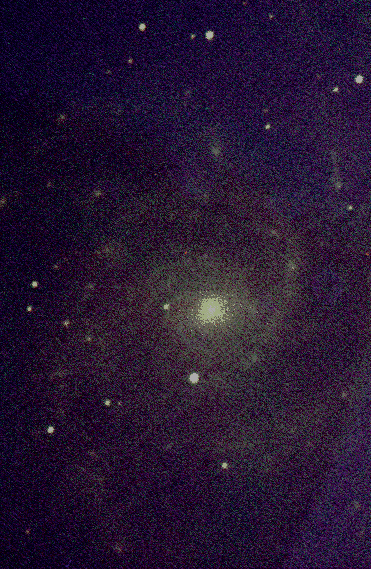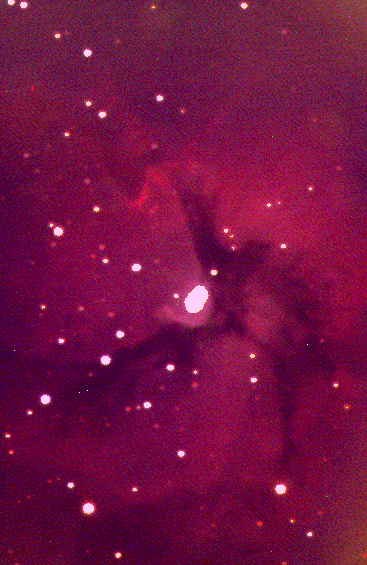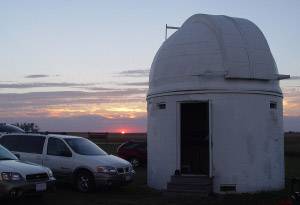To be reminded of how small we are, all anyone has to do is look up. Drive out away from the city lights and you’ll be amazed by what you see. Endless black sky, dotted with millions upon millions of tiny stars. Fascination with outer space will continue for years and years, as long as there are still a few people who don’t get turned off to astronomy when they realize it is a lot of physics (A LOT of physics). But even if physics and the other hard sciences aren’t your thing, there’s enough room in our big, wide universe to enjoy and learn about what’s out there, as the Champaign-Urbana Astronomical Society (CUAS) shows us all.
A healthy mix of advanced and novice astronomers provide the Champaign-Urbana with a great way to learn, and perhaps be less daunted the enormity of the universe. Founded in 1986 as an affiliate of the Champaign Park District, when Halley’s comet last graced us with its presence, the club will turn 30 next year. Originally the program was designed as a series of classes over six weeks to teach the community how to view the comet. Since then, the club has expanded and consistently engages with the public through various civic events and public viewing sessions, known as Skywatches.
The Vice President of the CUAS, Margaret Gelman, said she first became interested in astronomy as a toddler when she saw a Harvest Moon. It was in high school, when Gelman took physics and got a telescope, that she realized astronomy was something she wanted to pursue more seriously. Discussing the moment that astronomy became more than an idle fascination, Gelman said, “I pointed it [her telescope] at something bright, realized it was Jupiter, and I was hooked.”
In fact, Gelman says one way the CUAS gets new members and participants is during the holiday season. People recieve telescopes as gifts from well meaning relatives but don’t know how to use them. So they come to the CUAS for help, something the CUAS members are always happy to do.
That’s because the CUAS is all about learning and sharing a passion, whether you studied astronomy in college and grad school like Gelman, got a telescope from your great Aunt Kathy over the holidays, or simply want to learn something new, there’s a place for you at the CUAS. One of Gelman’s favorite moments as a member of CUAS are is when everyone is looking in a telescope, someone sees something bright in the sky, and everyone gets excited about it. The most important thing to remember, she says, is that, “you don’t even have to know what you’re seeing to be excited and have fun.” It is a welcoming, relaxed group that relishes in learning from each other.
The CUAS meets at a few local spots, some you’ve probably seen before, and maybe some you haven’t. Club meetings are held at the William M. Staerkel Planetarium at Parkland College on the second Thursday of each month at 7pm. All are welcome to attend while club business is dealt with followed by a program in which members and attendees can discuss recent observations and listen to members or guest speakers. A good balance of context and science can always be found, but most importantly you’ll always learn something new.
A new feature to the meetings is the “constellation of the month” when a member chooses and discusses a constellation of their choice. If you can’t make it to next month’s meeting on September 10, be sure to check out the new constellation of the month, an important addition to your word of the day, on the CUAS twitter or Facebook pages. The constellation for August was Serpens, also known as the celestial snake.

Though you don’t need to be a member to attend the CUAS events, membership does have its benefits. By paying $20 a year in dues, members get access to members only events, the CUAS library available at the monthly meetings, “use of the club’s telescopes and observatory, a subscription to the monthly newsletter Clear Skies, membership in The Astronomical League, discounted subscriptions to Astronomy and Sky and Telescope and, after six months of membership, eligibility to become an observatory keyholder.” I doubt that 20 dollars has ever gotten anyone so much before.
In addition to their monthly meetings, the CUAS also holds public Skywatches at their observatory located southwest of Champaign near Monticello Road. Held during the Saturday following the first quarter moon of each month, Skywatches are free to the public, you can come and go as you please. Bring your own telescope, or get training using the observatory equipment from members, but definitely bring a blanket because it can get chilly. Unfortunately, weather conditions are not always favorable, as I’m sure we are all familiar with, so be sure to check CUAS social media or call their hotline at (217)-351-2567 to find out about cancellations. It’s a little too chilly during our Midwest winters to Skywatch; take advantage of the remaining few of 2015 by heading to the next one on September 15 from 8-10pm.

Beyond their regularly held events, the CUAS also tries to engage with the community in other ways. This summer they held sidewalk astronomy events around town. Sidewalk astronomy is when you set up telescopes in populated areas, anyone walking by or hanging out downtown was welcome to use one and take a peak at what’s just beyond all that ozone. In addition, they’ve been involved in STEM (Science, Technology, Engineering, and Mathematics) nights at area elementary schools and are always looking to partner with other local organizations.
Another upcoming September event is “TACO” night at Meadowbrook Park. “TACO” Night, part of “Take a Child Outside” Week will include a short walk and an observation from Race Street. To find out more about this, and other upcoming events, visit the CUAS Events Calendar.
One of CUAS’ most recent projects has been with the Champaign County Forest Preserve District (CCFP), working to acquire Dark Sky Park status for Middle Fork Forest Preserve and Homer Lake. Dark Sky Park status is important because of the increase in urban lighting and the detriment it brings to the environment. Night sky conservation and the use of environmentally friendly lighting is important for everyone’s future of enjoyment of all the night sky has to offer. Gelman, her associates, and the members of CUAS are, “committed to preserving the sky, fighting light pollution, and promoting dark sky awareness.” Though nothing has officially been brought to the CCFPD, should CUAS succeed in achieving dark sky park status for Middle Fork, it would be a huge step as CUAS works to “protect the darkest skies in the county, educate the community, and promote conservation of all natural areas.” CUAS is passionate about ensuring that the club, and any local astronomers, can continue to look up.
Another undertaking the CUAS hopes to begin soon is a fundraiser to improve its facilities. They would really love to update the observatory dome and build a new facility. Their new digs would have new mounts, a roll off roof, and a telescope with a camera for members to take pictures of their observations.
If you’re interested in participating in the CUAS, get your feet wet on their website and social media accounts. Their monthly meetings are also a great way to get a feel for the club and “not meet members in the dark.” Take your family, take your friends, and be prepared to be awed when you go to the next meeting or Skywatch. A mix of education and recreation, people of any age or background are sure to find something to enjoy. Like Gelman said, “you even don’t have to know what you’re seeing to be excited.”
Donating to the CUAS, helping it take on night sky conservation and its other goals, is easy. With its recently acquired 501(c)(3) non-profit status, any donation you make is tax-deductible. You can donate via PayPal, in person at a club meeting, by mail, or by shopping at Amazon Smile.
To find out more, or ask questions, you can e-mail the club at cuas@cuas.org.
Photos by CUAS and the CUAS member Jeff Bryant.








